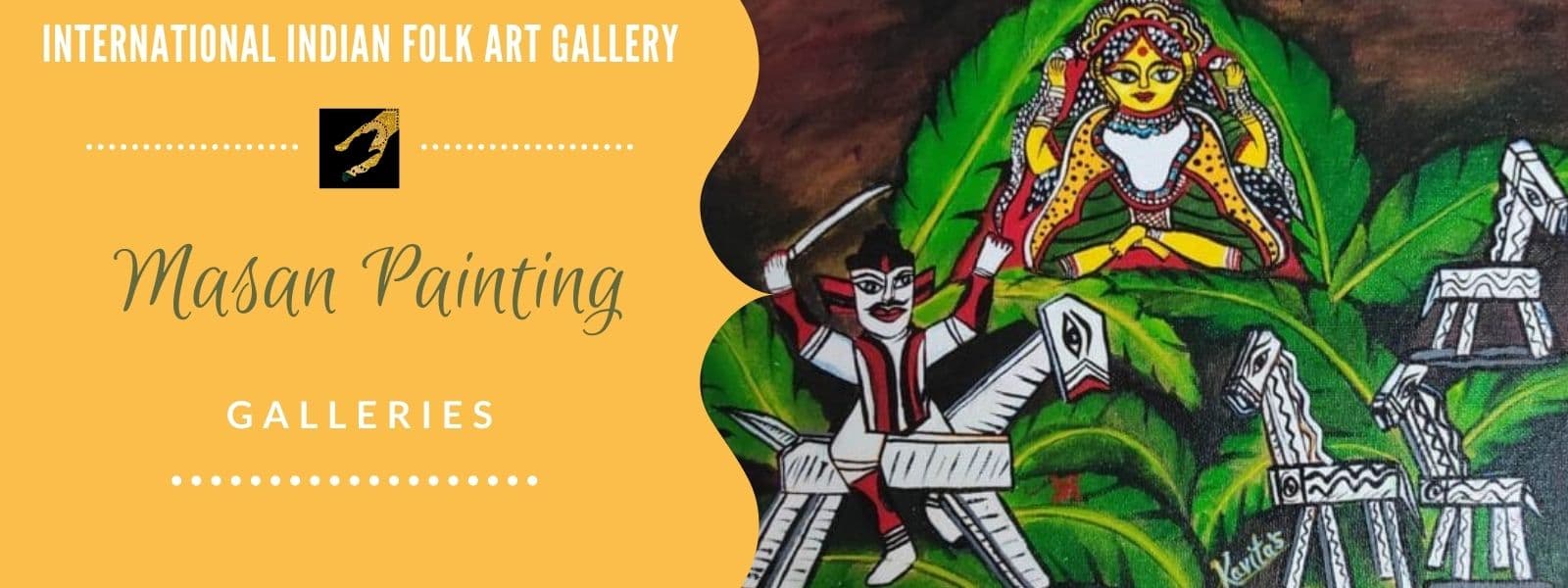Masan Painting
Masan Painting
You are no doubt aware of the Hindu festival of ‘Masan Pooja’. This is still practiced by the Rajbanshi tribe, particularly in North Bengal. They believe that Masan Devta exists as a ‘rudra’ god. This might seem at odds with other Hindu celebrations but it should be done nonetheless.
That’s why people suffering from this think that ‘Masan Devta’ is responsible. They go to the occultists who sometimes scare the spirit away, other times drive it away.
The history of Masan deities is linked to the spread of ancient Buddhist religion of Tibet. They were neither considered as gods or demons and they were meant for worshipping near crematoriums.
The word ‘masan’ is derived from the word ‘shashan’ in Bengali. An ethnic group-the Rajbonshis are the main patrons of this art form that they call masaņ chitrakala.
The early representations of the Masan deities were rendered in silk paintings that resembled Tibetan thangkas or paintings on cloth. They were said to have healing powers and the Masan paintings were often used for treatment.
Since the closing of the Silk Route in North Bengal, Tantrik Buddhism has lost influence and is now limited to Jalpaiguri, Darjeeling & Coochbehar.
Nowadays, the regional deities of Masan are made out of cork, even though they still maintain their bizarre and frightening looks.
The craftspeople who paint the ribbons are called malakar (garland makers). They make different patterns and structures with shola (a wild plant).
They’re proud of their heritage and express it through the use of handmade brushes and natural pigments on shola motifs, which have special importance to Rajbongshi people.



